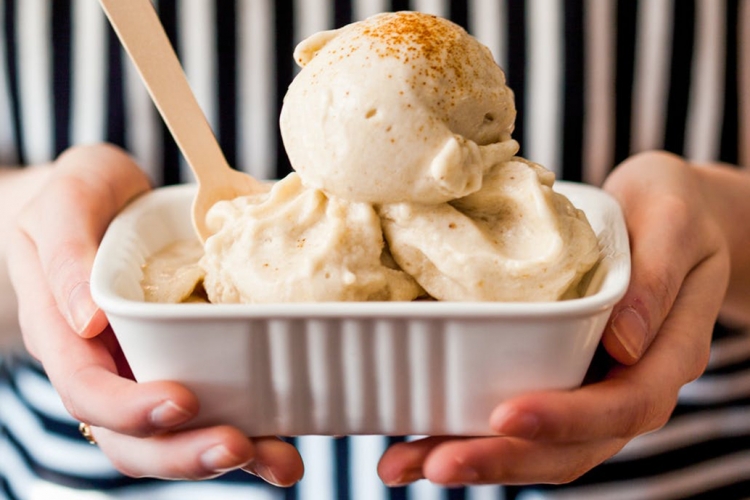Maintain Don’t Gain: Your Holiday Action Plan
Week 2: Your Tools to Prevent Holiday Weight Gain
As we told you last week, most Americans gain an average of about 1 pound during the holidays. While this may not seem like a lot, they usually don’t ever lose it.
Half of Adult Weight Gain Happens During the Holidays
The average American adult gains 2 pounds per year, so half of adult weight gain can be attributed to the holidays! And according the New York Times article linked above, people who are already overweight tend to gain a lot more. One study found that people who are already overweight gained five pounds or more during the holidays! And again, most people don’t ever lose it.
So it’s Best Not to Gain it in the First Place
Our goal for this holiday season is to help you not gain that one pound or more. We want you to come out on the other side of the holidays the same weight you are now. We’ll give you tools and tips to make this happen. We’ll help you make a plan.
Your Holiday Action Plan Starts Right Now
While it can sometimes seem mysterious, weight gain isn’t magic. It can be explained and quantified scientifically. Because scientists have studied how it works, they can offer some strategies for counteracting it. Strategies in general are going to entail eating less, choosing different foods, or increasing how much you move. These can sound tedious at first, but there’s a lot of fun to be had within each strategy from the learning of new concepts and the challenge of striving for new achievements.
Choose one of the Action Tracks below that you feel is most achievable for you.
But don’t stress out about this: you’re making temporary changes for a fixed period of time—you’re trying this out; afterward you’ll have the opportunity to reflect on your experience and decide which new habits you want to keep and what you want to discard.
Pick an Action Track
Choose one of the 6 Action Tracks below.
1. Track Food Intake
Food Journal: The old adage, “What gets measured, gets managed,” is important here. At least 15 scientific studies have shown that simply keeping a food journal where you write down everything you eat and drink each day leads to weight control and weight loss. You can do this by carrying around a small notebook and pen. The theory is that when you are at the point of making choices to eat foods that aren’t so healthy, you get a little extra boost of will power during your decision-making because you know you’ll be writing it down in the journal. That’s it. Nice and simple. Here’s more information on how to do it:
Food Tracking Apps: Another option is to use a food tracking app on your smartphone or computer. What’s nice about the food tracking apps, is that they give you a database of foods where hundreds of thousands of other users have already entered the foods along with nutrition content. When you go to record something you’ve eaten, you simply start typing the name of the food, and options pop up from the database. For example, let’s say you’ve just eaten some Trader Joe’s enchiladas. You simply type that into the app search blank, and you’ll more than likely find it in there, so all you have to do is press a button to add it to your food journal. To get an app, search for “food tracking app” in the app marketplace on your smartphone. MyFitnessPal is the most popular, but we also like MyPlate.
Counting Calories: So we said above that simply keeping a food journal is helpful by itself. If you’re of a more exacting nature and/or you appreciate data, you can pay attention to the calorie log in your food tracking app. Every time you add a food you’ve eaten in the app, it will track the calories you’ve consumed over the day. It also helps you set a calorie target so when you’re nearing the end of the day you can see how many calories you have left to “spend” that day or not. If you don’t overspend your calorie allotment, you won’t gain weight. Nice and simple. The apps will even help you set a lower calorie target—a caloric deficit—if you want to lose weight. You can do this on paper too, but it’s a lot more labor intensive because you have to look up each food online or in a calorie encyclopedia.
2. Intermittently Fast
Intermittent fasting can be much simpler than food tracking and calorie counting. Fasting just means not eating food for targeted short periods, such as half a day or a full day. The term “intermittent” is paired with it because you don’t do it full time, just intermittently, like once or twice a week. The concept behind intermittent fasting is that caloric intake over longer spans of time, like a week, rather than shorter periods, like a day, are actually what results in weight gain, weight loss, or weight stabilization. If you have more calories than you need on a particular day, but you make up for it on other days that week, so over the span of a week you don’t over-consume calories, then you don’t gain weight.
There are numerous scheduling options for these short fasts, but a popular one is the 5:2 ratio—5 days in a week you eat normally, and on 2 of those days you fast either in the morning, or as much of the day as you can handle. The advantage is simplicity: you don’t have to count calories or track foods if you don’t want to; you end up eating far fewer calories than normal on the fasting days, which balances out your calorie intake over the week. Another popular method is the 16/8 practice: every day you fast for 16 hours and eat only during the remaining 8, which simply means you stop eating after dinner and you skip breakfast.
This can work especially well during the holidays where huge meals and sweet treats are in abundance. You can have those, but then you even out with periods of fasting.
If you’ve never fasted before, start slowly! If you normally eat breakfast, try not eating breakfast one day and see how that feels. If you’re going to try the 5:2 method, then progress to not eating breakfast and lunch one day and see how that goes. If you’re going to try the 16/8 method, see what happens when you skip breakfast and then don’t eat any more after dinner, confining your eating to an 8-hour period between lunch and dinner. Make sure to consume plenty of healthy liquids—like water, seltzer, and even some fruit juice—while you’re fasting! You should not reduce liquids, and in fact you may want to increase them.
As always, check with your doctor prior to making major changes to your diet. Diabetic members especially should consult their doctors before trying this because it can result in their blood sugar dropping too low, and they may want to avoid this Action Track.
- Intermittent fasting to compensate for those holiday pounds
- Feeling Like A Holiday Glutton? It May Be Time To Try A Fast
- 4 tips to keep an intermittent fasting diet on track
(For extra umph, this Action Track can be paired with tracking calories as described in Track 1, but this is purely optional.)
3. Strategically Replace Foods
You’re probably familiar with this one because a lot of health tips entail replacing one food with another. The concept is that simply abstaining from snacks or the foods you crave is really hard because of your habits around eating certain things, but if you replace those snacks or ingredients in foods you prepare with healthier options, you sort of “trick” yourself into being healthy by not battling the habit head-on. There is a lot of conflicting information on which foods are “healthy.” Since our goal for this endeavor is managing weight, we’ll focus on one measurement, which is how many calories a food has. So you’ll be switching from some ingredients, foods, and snacks that have higher calories to ones with lower calories.
One thing to note when you’re doing the food swaps: don’t go too low on fat. Your body needs fat to survive, and fat is satiating, which could actually help you eat less because you’ll be more satisfied. Just eat healthy fats (extra virgin olive oil, coconut oil, real butter, nuts, avocados, eggs, dairy, and fatty fish and fish oil), and don’t go overboard.
Here are some articles with ideas for strategic food swaps:
- 40 Food Swaps to Lose Weight
- 11 Simple Swaps for Dramatic Weight Loss
- 10 Simple Food Swaps to Save Calories
- 26 Simple 100-Calorie Food Swaps
- 15 easy food swaps that will help you lose weight by Christmas!
(For extra umph, this Action Track can also be paired with tracking calories as described in Track 1, but this is purely optional.)
4. Move More
This one is simple. Simply add additional movement to your current exercise and/or leisure routines and activities. If you jog twice a week for 2 miles, think about adding a third session, or increasing your distance to 2.5 miles. If you go out dancing once a week, go twice. If you play tennis or do yoga, add an additional weekly session. If you take a weekly walk with friends, add another walk or increase the length. If you play golf and use a cart, trying walking more of the course while your friends drive the cart. You get the idea. If this seems a little onerous, just try adding 5 more minutes of movement each time you’re doing activities and see how you feel. Maybe you’ll find it doable and you can add another 5 minutes—or maybe 5 is your limit, and that’s okay. Don’t do more than you think is good for you because you don’t want to get injured, which could totally curtail your activity while you recover.
Or add some new fun activities you’ve been wanting to try out: Remember Play?
Consider Strength Training: One more thing, if you don’t already do any sort of strength training, consider it. Strength training can increase your metabolic rate for hours and even days afterward, supercharging your ability to control your weight. And everyone can find a strength training program suited to their level of fitness. If you’ve never strength trained before, it’s a good idea to start with some sessions with a personal trainer so they can create a program for you and teach you proper form. (As a side note, gaining muscle may actually cause you to gain weight, so if you’re going to strength train, you may want to use additional measurements besides weight to track your progress.)
(If you’re combining this Action Track with using a calorie tracking app, the apps will usually allow you to record exercise, which will gain you the ability to consume extra calories on exercise days.)
5. Strategically Abstain
This one is toward the end because it tends to be harder than the others for a lot of us. Strategically abstaining might entail entirely skipping a holiday party you’re on the fence about, or going to a holiday party you want to attend but abstaining from refreshments or just sweets at the party. This might entail not making Christmas cookies this year—or maybe making a fraction of the amount you normally make. This might entail throwing away or giving away a box of chocolates or a plate of cookies you receive as a gift. This might mean making a commitment to having only 1 sweet per week during the holidays, even though you’re encountering them every day. This might mean cleaning out your kitchen of all foods with added sugar and throwing them in the garbage. This might mean taking a different route home where you don’t pass the ice cream shop. This could mean skipping dessert at Christmas Dinner.
Any addiction can be hard to quit, but a sugar addiction can be especially hard. Check out ACERA’s article on How to Deal With Sugar Cravings for more resources.
6. Some Combination of the Above
As you’ve been reading through the Action Tracks, you’ve probably noted that you don’t have to choose only one. More than one may speak to you and seem achievable together. This is fine, as it means you’re inspired to make changes in multiple areas.
A word of caution: you are far more likely to make changes if you take small steps first and concentrate your efforts in a single area.
Record Your Plan
Download your Holiday Action Plan and Tracker. Record where you’re at right now. Follow the weigh-in instructions below and enter your starting weight. Then choose one Action Track to focus on. You’ll see that there is a row in the tracker for each week. Start with the first week, and record specific commitments for the first week based on your Action Track and the information you read in the articles that accompany each track. If you want, you can record all your commitments for the rest of the weeks in advance, or you can wait until you finish the first week to make new commitments for the next week. The key is to make specific commitments ahead of time so that you’re not just trying things willy-nilly—wishy-washy efforts get dropped quickly. Make a commitment, and then see if you can stick to it. Learn from your experiences, figure out what went right and what didn’t go so right, and use that when you’re setting your next commitments.
How to Weigh In: You’re doing a science experiment to see how making a specific life intervention results in weight gain, loss, or stabilization, so you don’t want to introduction extra variables when taking your measurements. Make sure you weigh yourself under nearly the same conditions at every weigh-in. If you weighed yourself right after eating a giant burrito vs. a light salad, how do you think that would affect your weigh-in? Follow these guidelines:
- Make sure your scale is on a hard, even surface—no carpeting.
- Weigh yourself first thing in the morning when you wake up before you eat or drink anything.
- It’s probably a good idea to use the restroom if you need to prior to all your weigh-ins.
- Wear the exact same clothes every time you weigh in.
- Optional: The Holiday Action Plan and Tracker has a place to record a weekly weigh-in. However, your weight may fluctuate up and down over the week for various reasons, and what you weigh on a single weekly weigh-in might not be totally representative of what you weigh. If you can handle the extra effort, it’s probably more accurate to weigh yourself daily or even a few times a week and record an average in your tracker. More info here.
Download the Holiday Action Plan and Tracker
Photo by Teddy Kelley





